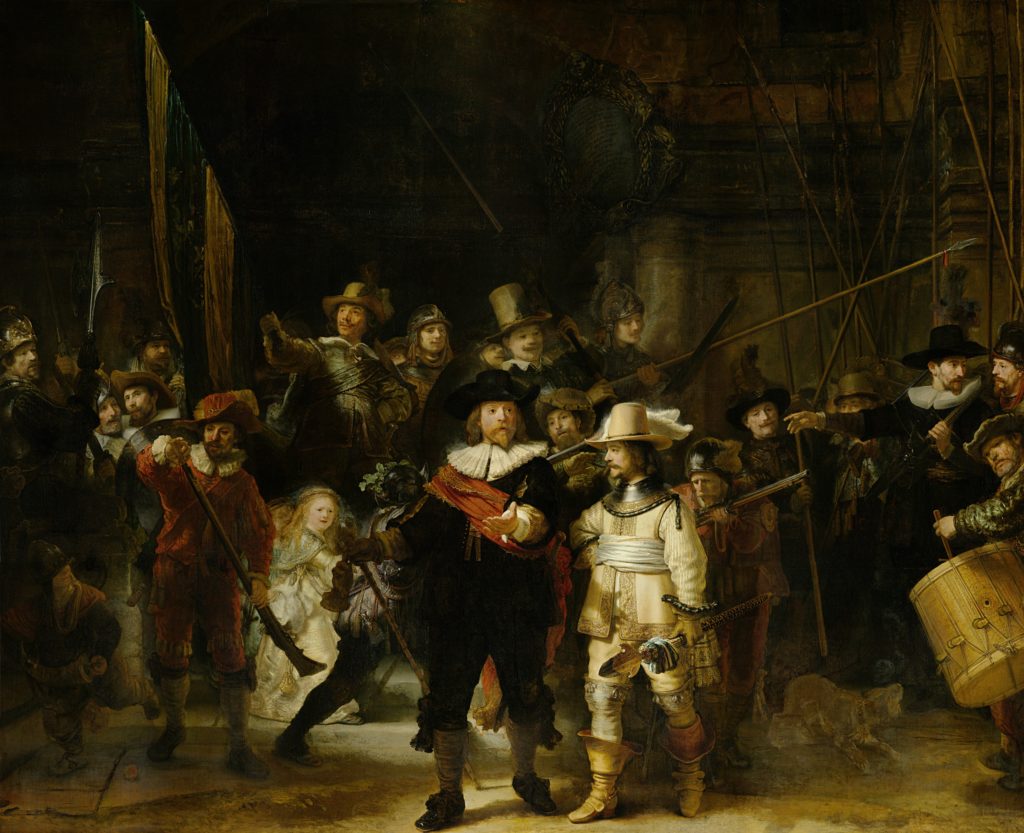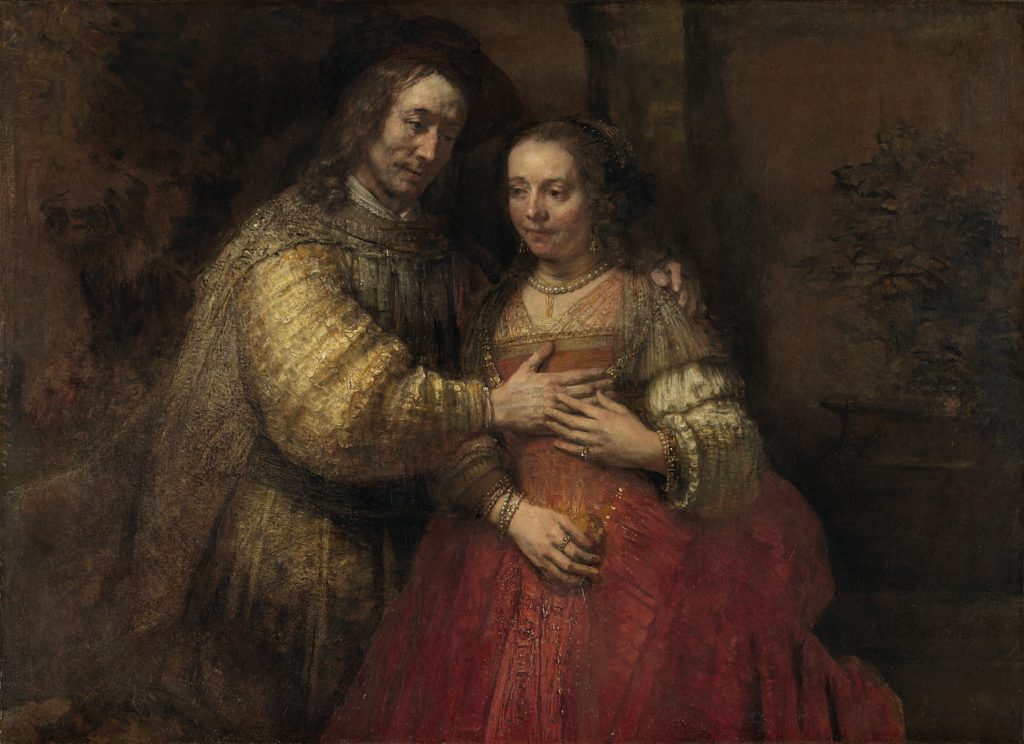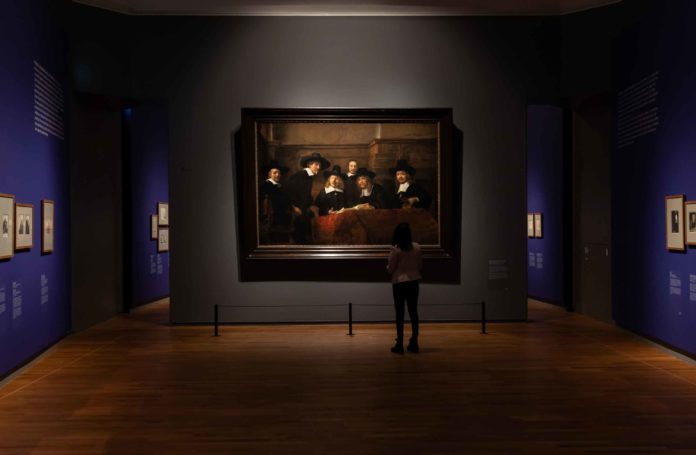2019 marks the 350th Anniversary of Rembrandt van Rijn, the greatest master of the Dutch Golden Age. To celebrate this important anniversary, the Rijksmuseum will stage The Year of Rembrandt, an extraordinary year of special events and exhibitions celebrating the work of one of the world’s greatest artists.
The Rijksmuseum is currently presenting the exhibition “All the Rembrandts” (through June 10, 2019). In the autumn, the Rijksmuseum will showcase a comprehensive overview of paintings by the two great masters of the 17th century in the exhibition “Rembrandt – Velázquez” (October 11, 2019 – January 19, 2020).
As well as holding the world’s largest collection of Rembrandt paintings — including “The Night Watch,” the portraits of Marten Soolmans and Oopjen Coppit, “The Jewish Bride” — the Rijksmuseum collection offers the world’s most comprehensive and representative overview of Rembrandt’s painting oeuvre.
Given the extreme rarity with which many of these delicate drawings and prints go on display, “All the Rembrandts” offers a once-in-a-lifetime opportunity to glean an unparalleled perspective on Rembrandt the artist, the human, the storyteller, the innovator.

The recent acquisition of the spectacular marriage portraits of Marten Soolmans and Oopjen Coppit means the Rijksmuseum’s collection of Rembrandt paintings is now the largest in the world. With its total of 22 works, from the early “Self-Portrait as a Young Man” to the later “Self-Portrait as the Apostle Paul,” the collection forms a coherent overview of his entire life. The highlight of the collection of Rembrandt’s paintings is his greatest masterpiece, “The Night Watch.”

The comprehensive collection of drawings encompasses all Rembrandt’s periods and styles, and includes numerous exceptional drawings from his early period. The Rijksmuseum will show only the most beautiful and finest of Rembrandt’s 1300 prints. The 17th-century prints are exceedingly fragile and rarely displayed in public.
“All the Rembrandts” will explore different aspects of Rembrandt’s life and work through a number of themes. The first section presents the milestones of his career as a young artist; when Rembrandt looks at himself in the mirror, the viewer looks over his shoulder. A close examination of Rembrandt’s many self-portraits reveals his growth as an artist of incomparable talent.
The second section of the exhibition focuses on Rembrandt’s surroundings and the people in his life. As a young man Rembrandt honed his craft by painting portraits of his mother, his family, and acquaintances. He even made a powerful portrait of his wife Saskia as she lay ill in bed. The artist was also fascinated by the wider world around him: the beggars, the buskers, the vagrants, the actors. He drew and painted countless portraits of the people he encountered.

Watch the PBS News video “For the First Time Ever, ‘All the Rembrandts’ Are on Display in Amsterdam”:
Rembrandt was a gifted storyteller, and his stories are at the heart of the last section of the exhibition. Tales from the Bible inspired “Isaac and Rebecca” (the alternative title for “The Jewish Bride,” c. 1665–1669) and “Self-Portrait as the Apostle Paul” (1661), in which he gives masterful expression to gestures and emotions that are familiar, tangible, and intimate. Early depictions of these tales tend to be delicate and refined; later in life Rembrandt used a coarser experimental technique, applying ingenious color and light effects to further enhance the narrative and draw out its essence.

More About Rembrandt:
Rembrandt van Rijn (1606–1669) was born in Leiden, the son of a miller. After finishing Latin School, his parents enrolled him at Leiden University. Rembrandt soon dropped out and became an apprentice painter under Jacob van Swanenburg in Leiden, and later Pieter Lastman in Amsterdam. Back in Leiden, he set up as an independent artist together with Jan Lievens. At this time, Rembrandt mainly painted biblical scenes in a precise style and with vibrant colors.
In 1631, he moved to Amsterdam, where he received numerous commissions for portraits. His many pupils included Ferdinand Bol, Govert Flinck, and Carel Fabritius. In this period, Rembrandt develop a more powerful chiaroscuro, a looser brush, and a greater sense of drama. He focused more on historical scenes and made numerous etchings and drawings.
In 1634, Rembrandt married Saskia Uylenburgh. They had a son, Titus, in 1641. Then a year later Saskia died. In 1654, Rembrandt had a daughter with Hendrickje Stoffels. By now, he had accumulated huge debts and was forced to sell his house and property. He died in 1669 and was buried in Amsterdam’s Westerkerk.
Learn more about “The Year of Rembrandt” exhibition and activities at the Rijksmuseum here.
Sign up to receive Fine Art Today, the free weekly e-newsletter from
Fine Art Connoisseur magazine.








